SEA TURTLE ECOLOGY
Overview
There are seven species of sea turtles that are found around the world. Three of these species (the loggerhead, the green, and the leatherback sea turtles) can be found within the Mediterranean Sea. While the leatherback sea turtle is rarely seen in the Mediterranean due to its preference for deep waters, loggerheads and greens can be found in Greek coastal environments. Loggerhead turtles nest and forage in several places around Greece, while greens are only known to feed in this area. The major green sea turtle nesting grounds are found on the eastern side of the Mediterranean basin such as in Turkey and Cyprus.
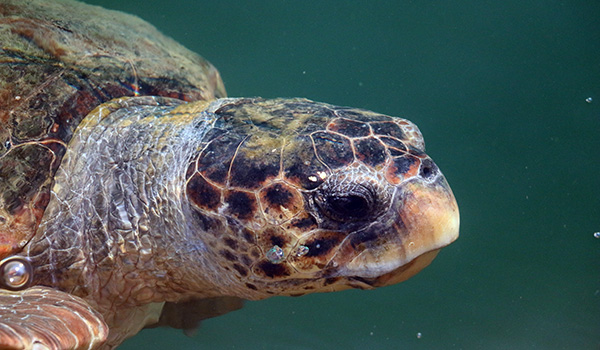
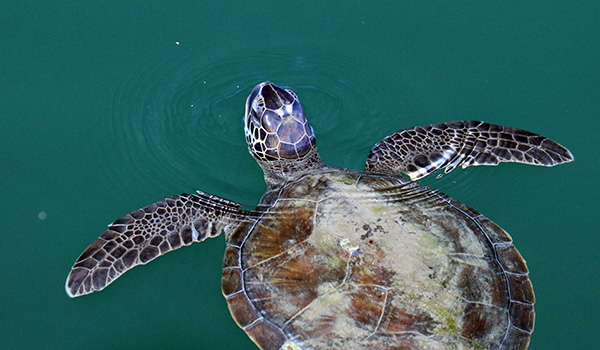
Sea turtles have an important role in the ecosystem. In the marine environment, they are mobile reefs that feed several organisms in areas of the ocean in which there is very little food. They can fulfil this role as their carapace (the shell) is home to many species that commonly act as food to many animals. In addition to this sea turtles enrich the terrestrial environment. The decomposing eggshells and hatchlings that did not make it remain on the beaches after a female has laid her eggs, providing a rich supply of nutrients to many plant species that make up the dune systems we find on these beaches.
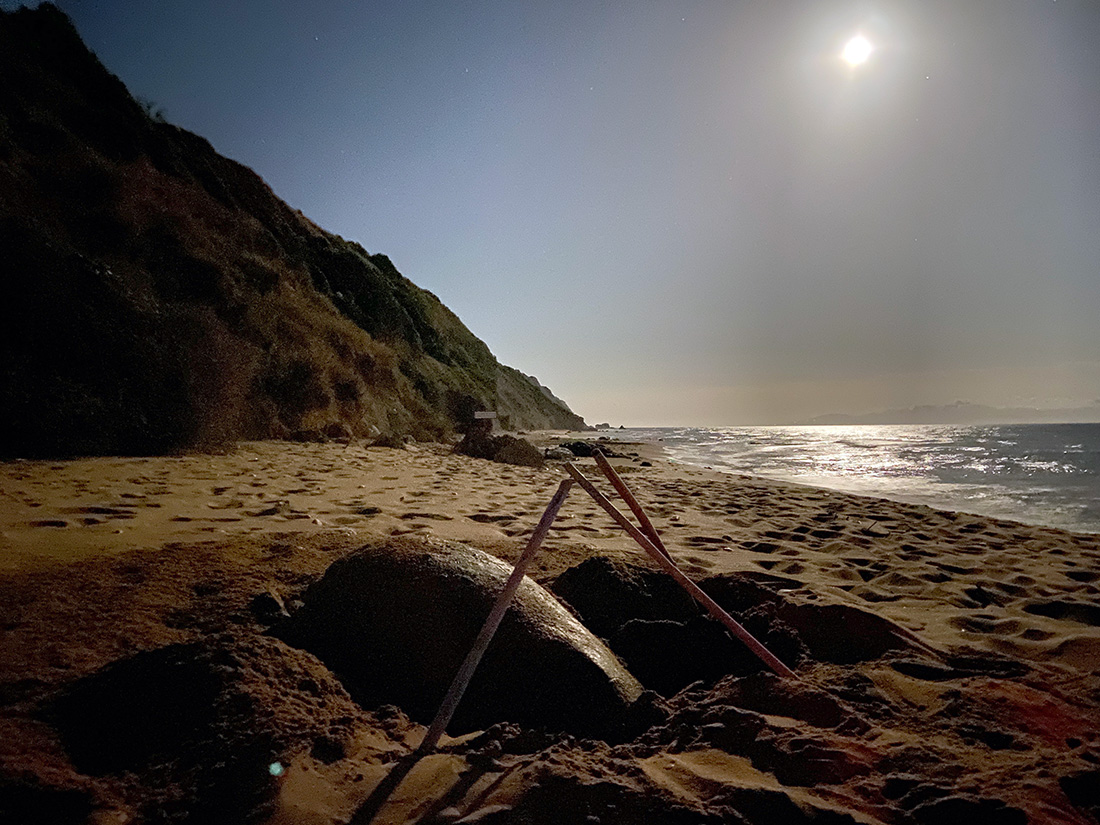
Sea turtles are far migrating, deep-diving animals. Loggerheads can stay underwater for up to 4 hours when sleeping but usually come up for a breath every 4 to 5 minutes. Loggerheads are constantly on the move, migrating between foraging grounds that they use at different times of the year (i.e., summer and winter). The loggerheads in the Mediterranean tend to migrate to either the north of Africa or to the northern Adriatic when water temperatures start to drop in Greek waters. During the Mediterranean mating period (April – June) individuals tend to return to the same region in which they hatched to reproduce. The females then deposit their eggs on a beach in the same area as they hatched. Once these individuals hatch it will take them between 15-25 years to reach maturity and perform the mating and nesting process themselves.
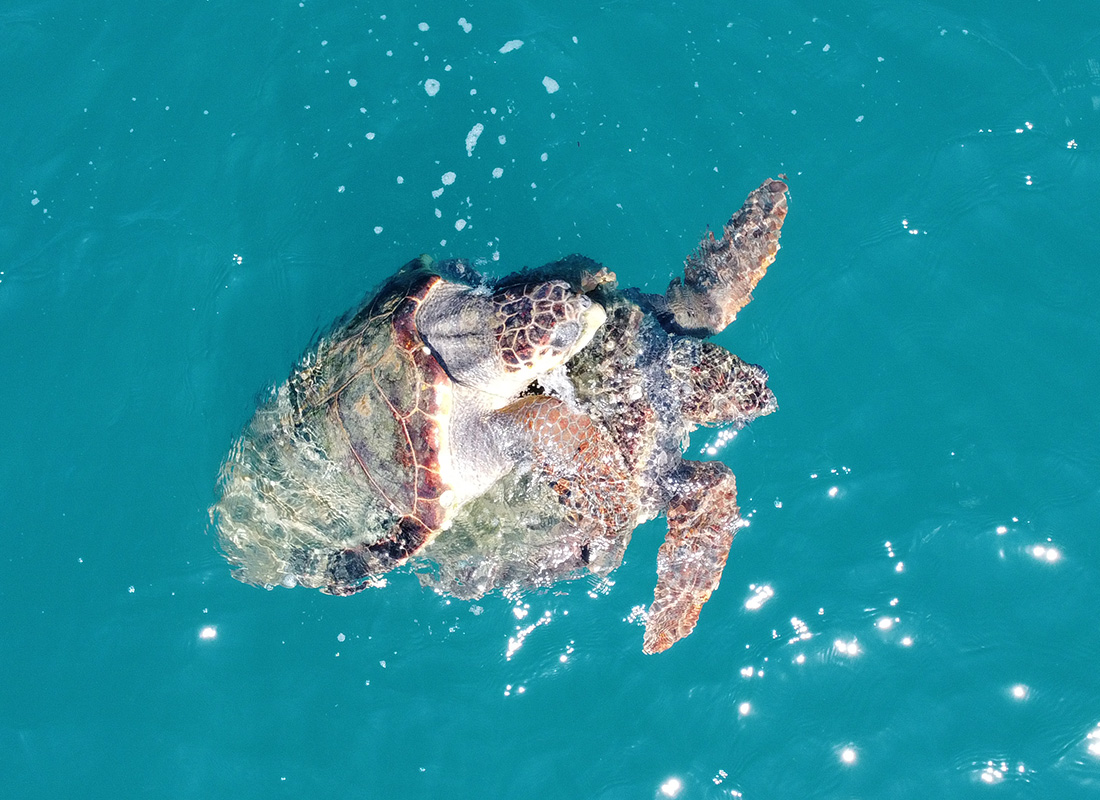
Photographic Identification
Photographic Identification (Photo ID) is a common technique used in ecological research. Here, natural markings on animals that are consistent over time are used to identify individuals. This is a popular low-cost technique that has been applied to many different species of animals, including sea turtles. A sea turtle’s head consists of many different little shapes which are called scutes. The shape and pattern of these scutes are unique to every individual and remain consistent over time and can therefore be used to identify individuals.
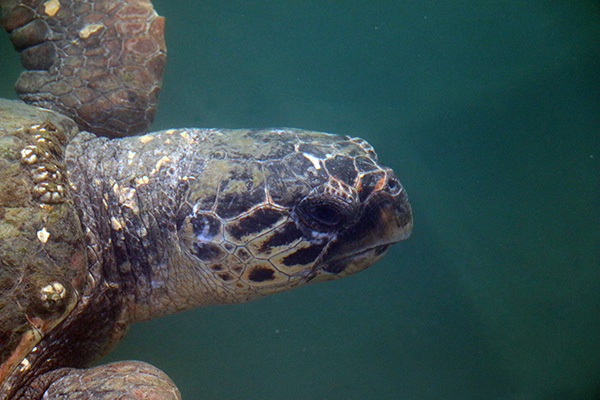
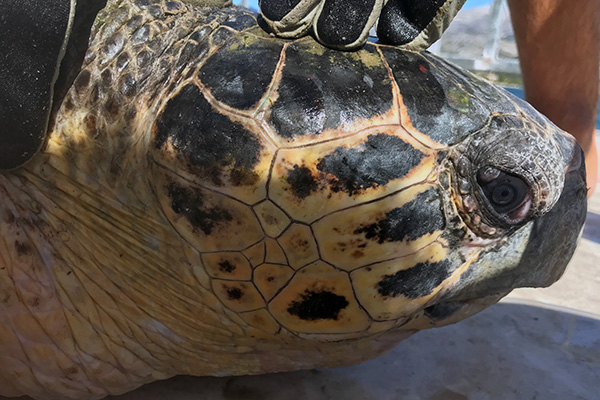
Using Photo ID, in combination with a mark-recapture program in 2021 we were able to identify 340 different individuals. Of these 340 turtles, 330 were loggerheads, and 10 were greens. The majority of these turtles were identified during the mating season, some of the turtles however remained within the harbour throughout the winter months.
Loggerhead Nesting and Hatching
Loggerheads do not nest every year but rather every 2-3 years. During one of these nesting seasons, females can lay between 2-6 different clutches. In Kefalonia, each clutch contains 90 eggs on average where each egg is the size of a ping pong ball. It is important to note that a female does not nest every time she emerges onto the beach. Here we have noticed that only every third emergence results in a nest. Once the eggs have been deposited the female shows no further signs of parental care. The eggs will then incubate between 45-60 days (depending on the sand temperature) until the hatchlings emerge and crawl to the sea.
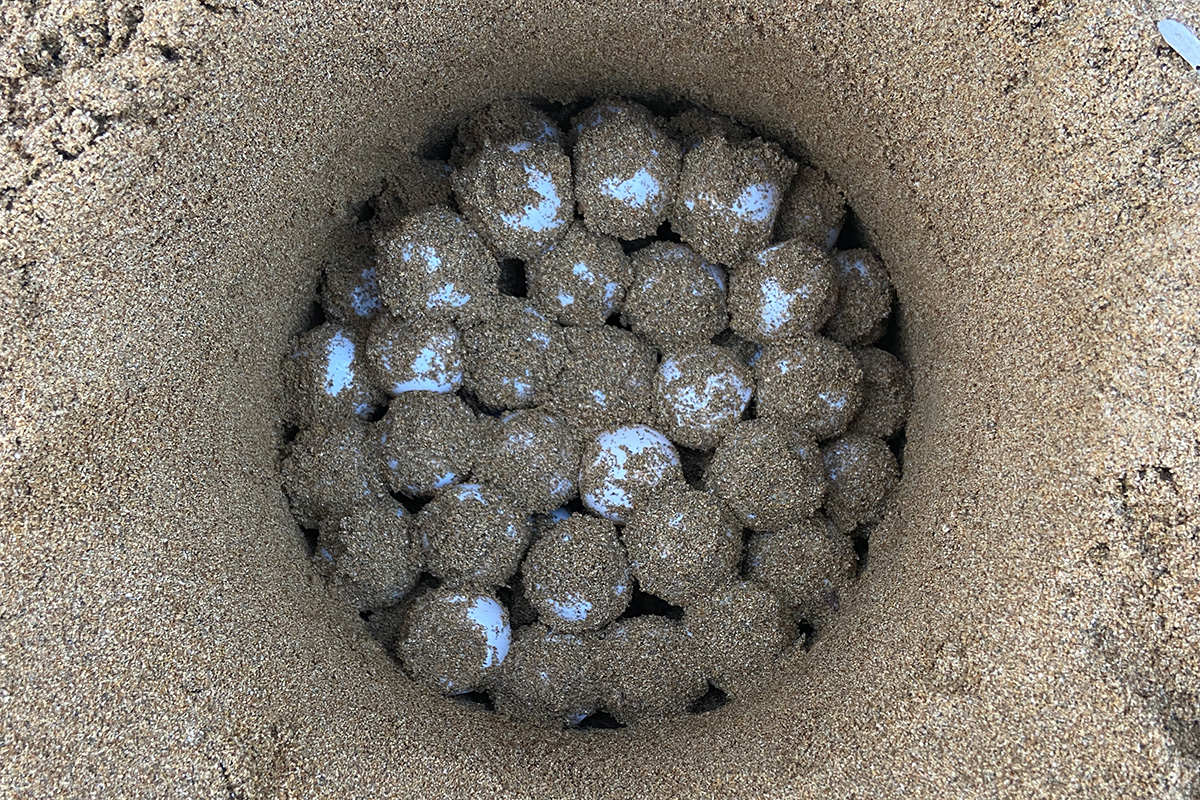
The sand temperature plays a very important role in the incubation process. Not only does it determine the speed at which the eggs incubate, but it also determines the sex of the hatchlings. The pivotal temperature (the temperature at which a clutch will produce a 50:50 ratio of males and females) is 29°C. Anything above 29°C will produce females and anything below this will produce males. If this temperature is altered by only 4°C this could skew the sex ratio by 100%.

Argostoli Harbour Turtles
The Argostoli harbour is a large temperate feeding, resting, and mating grounds visited by hundreds of sea turtles every year. The shallow waters and food rich environment are inviting factors for the sea turtles, several of which permanently reside within the harbour. While we always encourage people to go to the harbour to admire the sea turtles in the region, it is important to understand how to interact with these wild animals. The feeding of fish to the turtles is a common practice that occurs throughout the year. In a natural setting fish is not a major constituent of a sea turtles’ diet. Sea turtles are too slow to catch fast-moving prey such as fish. Turtles’ natural diet primarily consists of different crustaceans and molluscs.
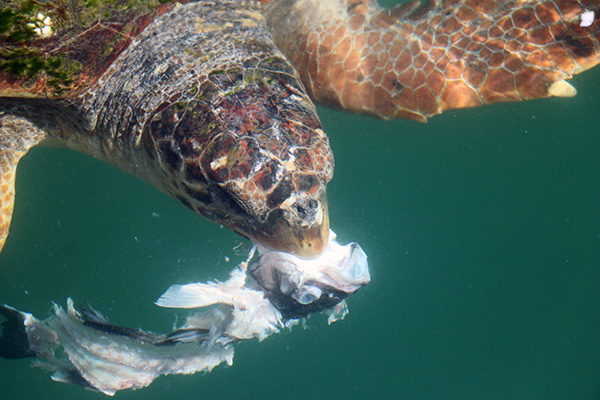
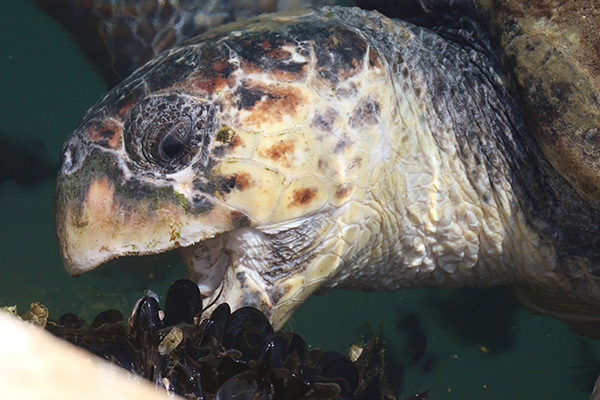
The feeding of fish is associated with several consequences for sea turtles. It is comparable to feeding humans fast food daily. Sea turtles who regularly feed on fish have been shown to suffer from cardiovascular and liver diseases as well as vitamin and mineral deficiencies. In addition to this fish causes turtles to associate humans and food leading to them seeking out areas of high human densities in search of food. This in turn may lead to a higher-than-normal number of boat and propeller strikes as well as entanglement in fishing gear.
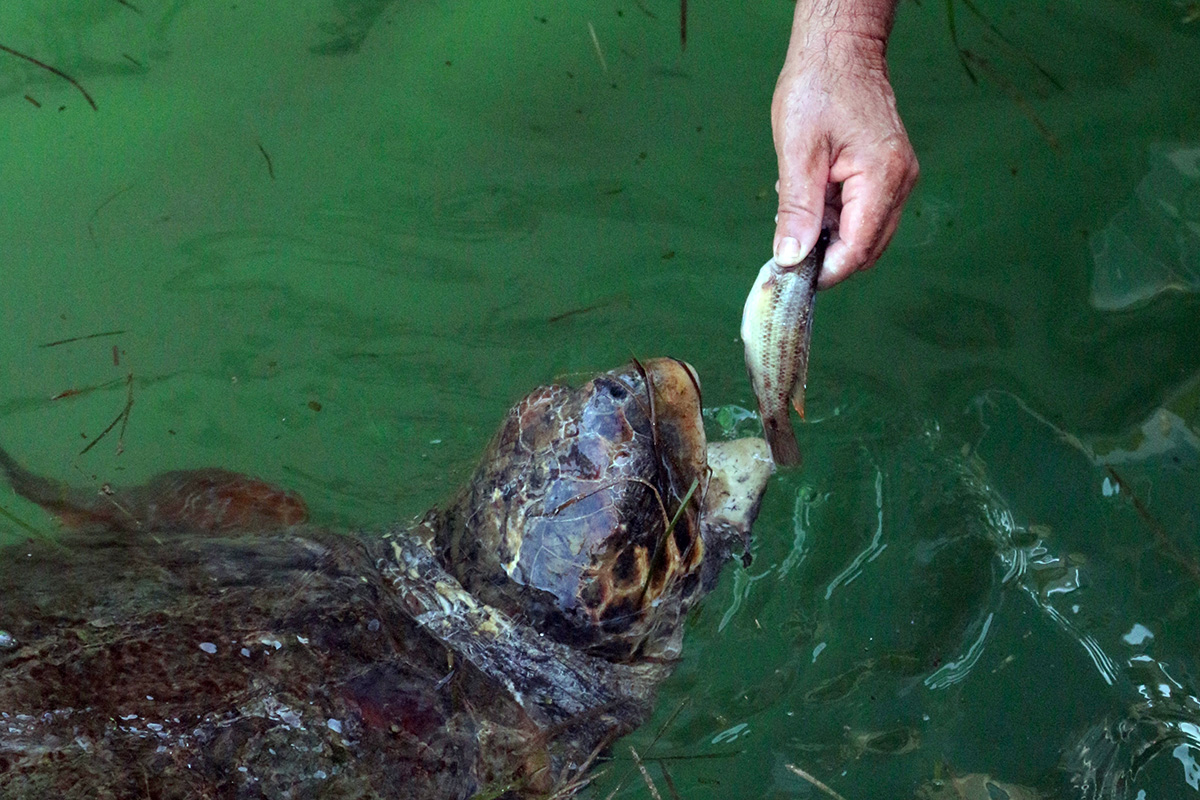
The feeding of fish is also associated with several behavioural consequences. Although fish is bad for a turtle’s health it is a very energetically valuable resource. As the fish that is fed to the turtles is limited turtles compete with one another to gain access to this resource. In fact, turtles are more aggressive to one another in the presence of human-fed fish, and it also causes them to aggregate in regions of the harbour in which they get fed.
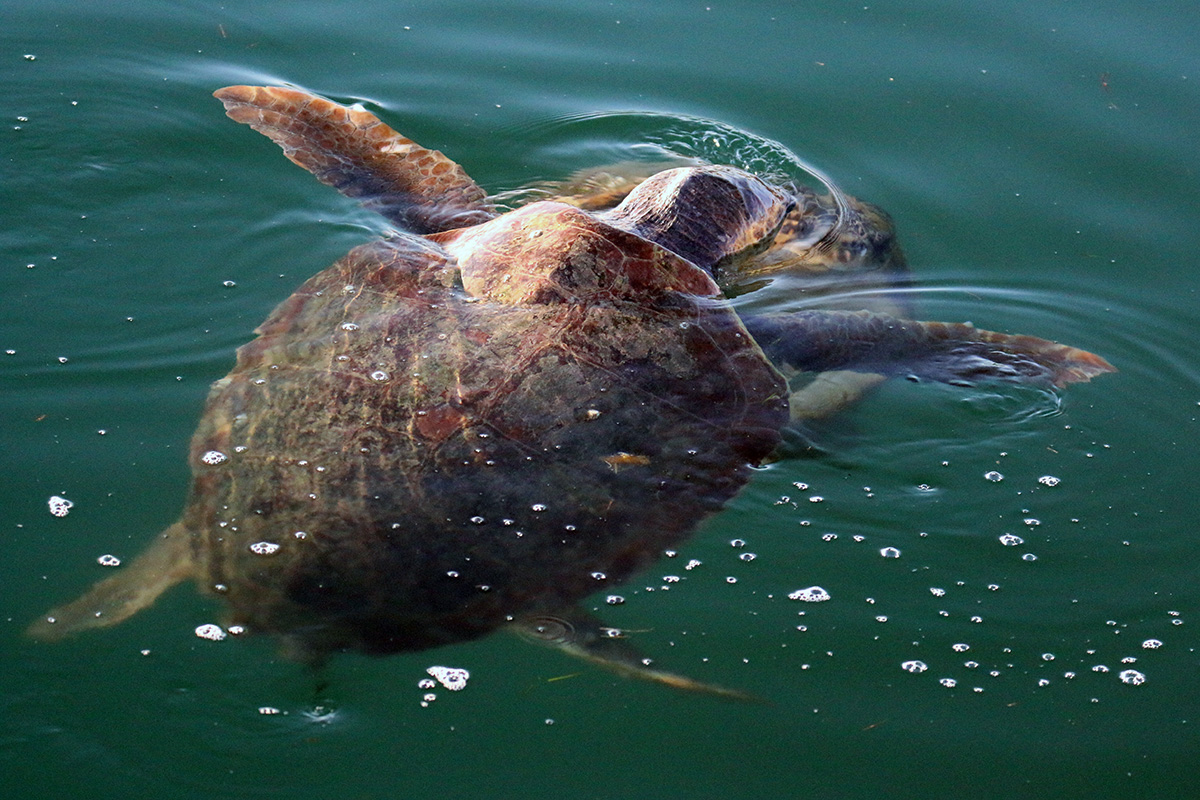
Threats to Sea Turtles
Sea turtles have persisted through millions of years, but it is only in the last few that they have started to face threats linked to anthropogenic factors. The two major threats we observe around Kefalonia are linked to fishing and boat traffic. Every year Wildlife Sense finds many turtles with fishing lines entangled around their limbs, ingested lines (and hooks), or drowned in nets. This entanglement may have severe consequences such as loss of limbs due to restricted blood flow or drowning. Boat traffic is a big concern, especially in the summer months when we find more boats around the island. As turtles have to surface to breathe boats travelling above the speed limit regularly collide with them damaging the turtle with the hull of the boat or their propellers.
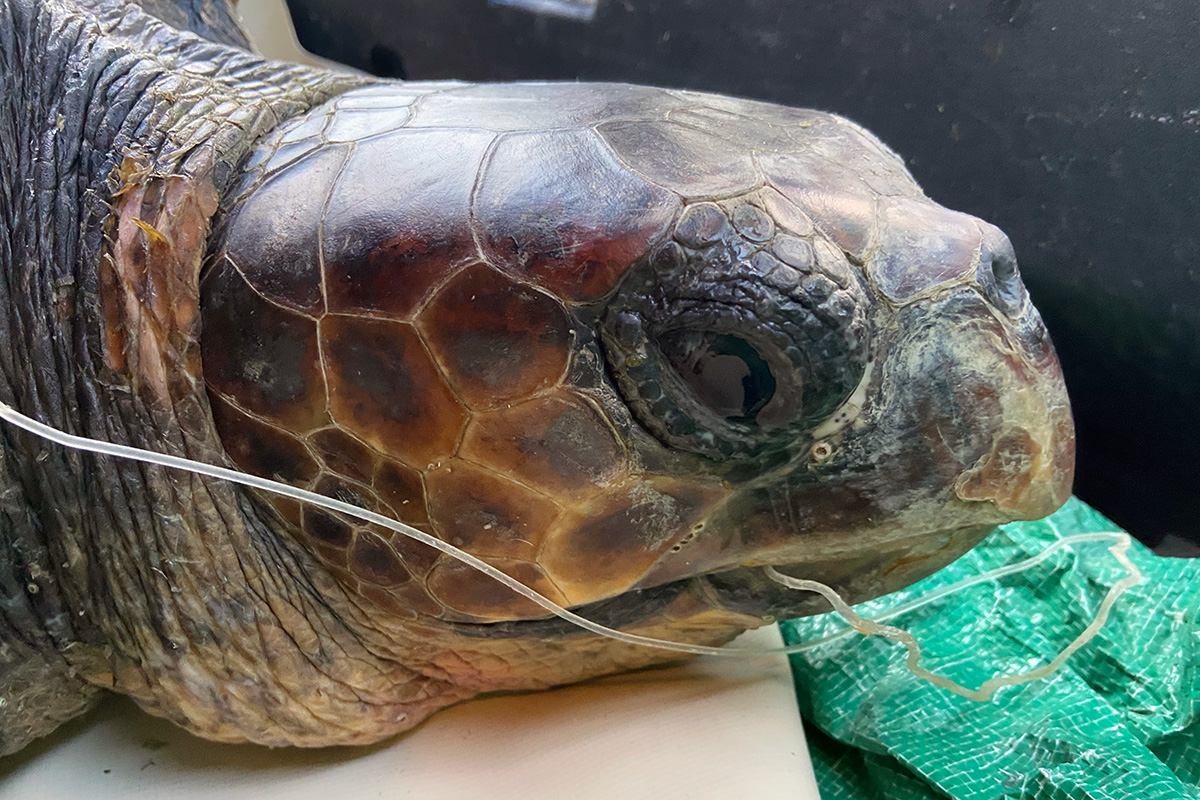
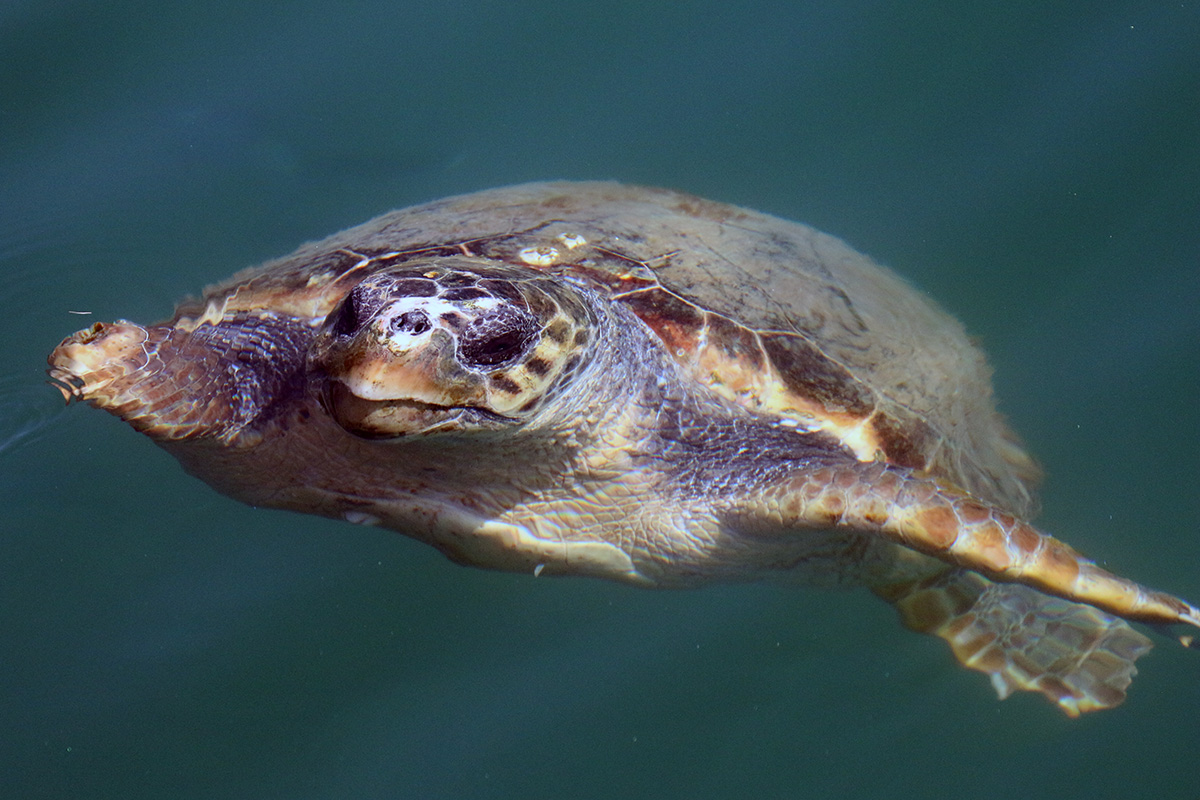
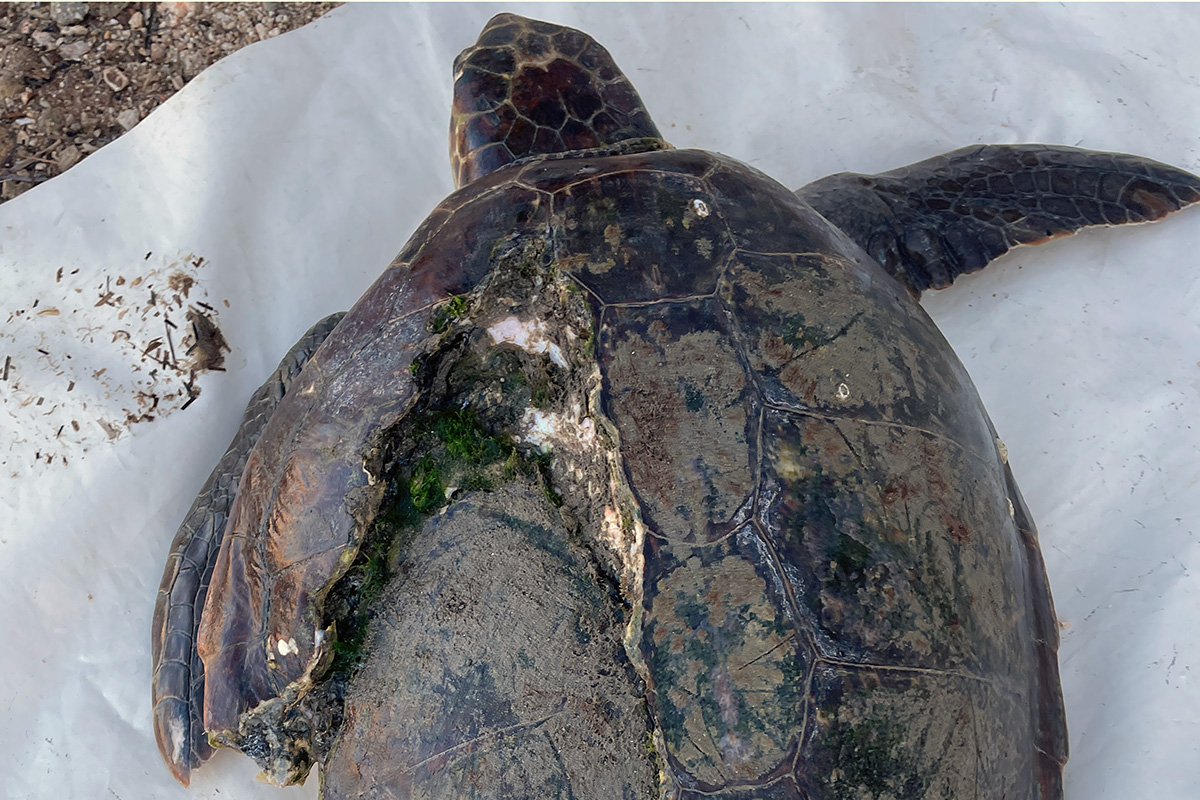
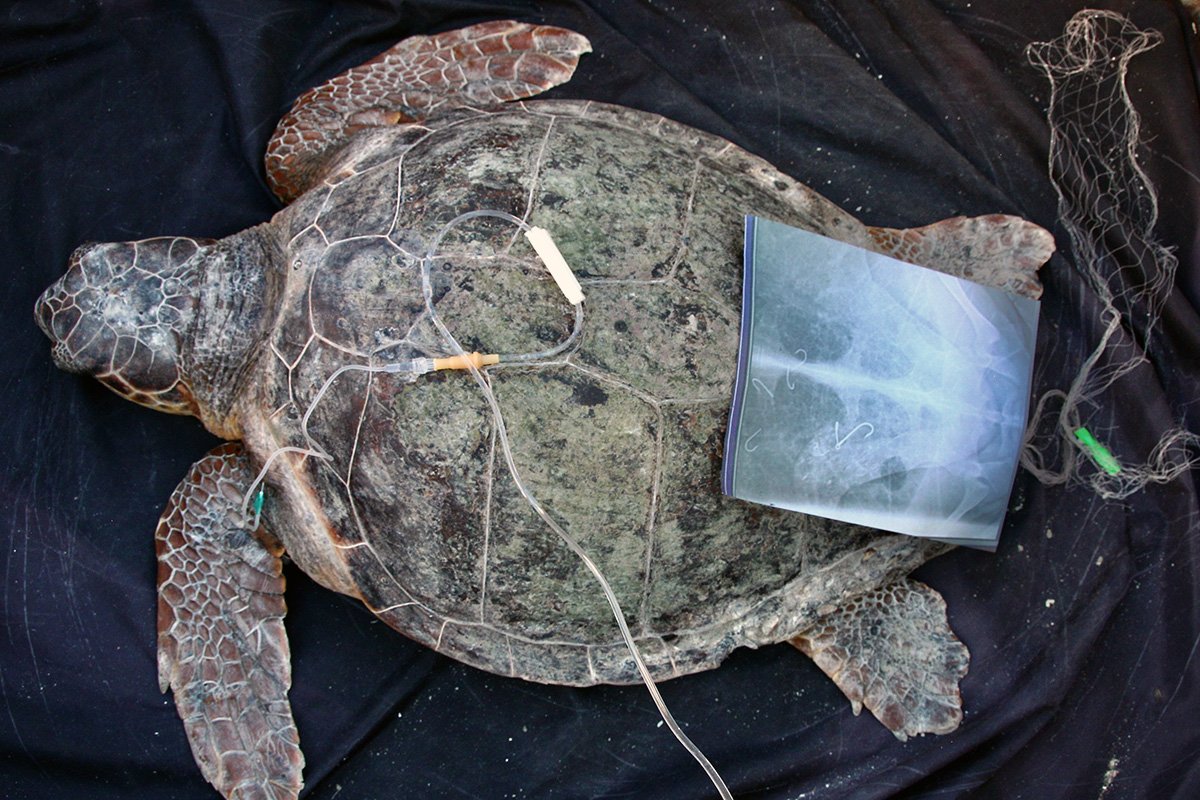
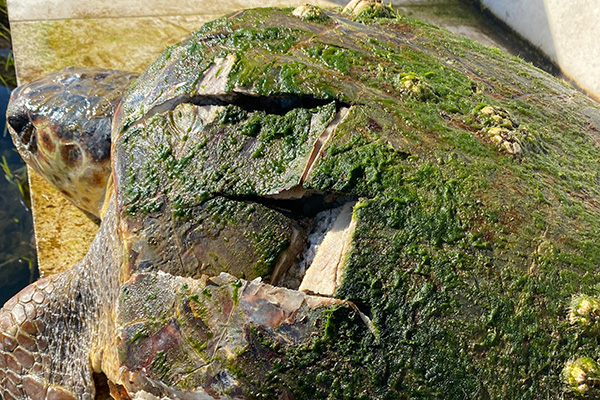
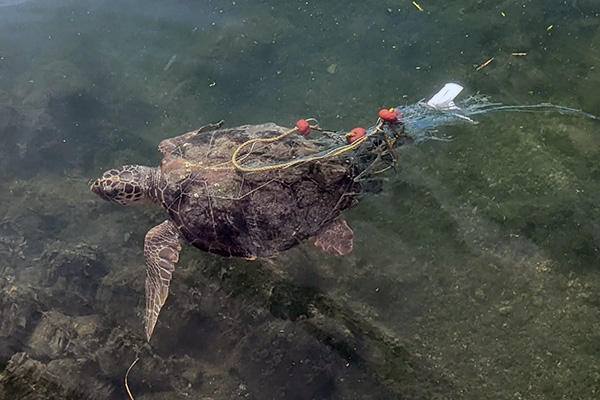
Other threats turtles face can be linked to climate change. Climate change can have a large direct and indirect effect on sea turtle populations around the world. Rising sea levels destroy valuable nesting sites, increase the occurrence of nest flooding, and hence can lead to a lower nesting and hatching success. In addition to this, due to sea turtles’ reliance on sand temperatures for their sex determination future temperature rises may result in female-biased sex ratios. Additionally, higher than normal sand temperatures may also cook the eggs killing the embryo inside it.
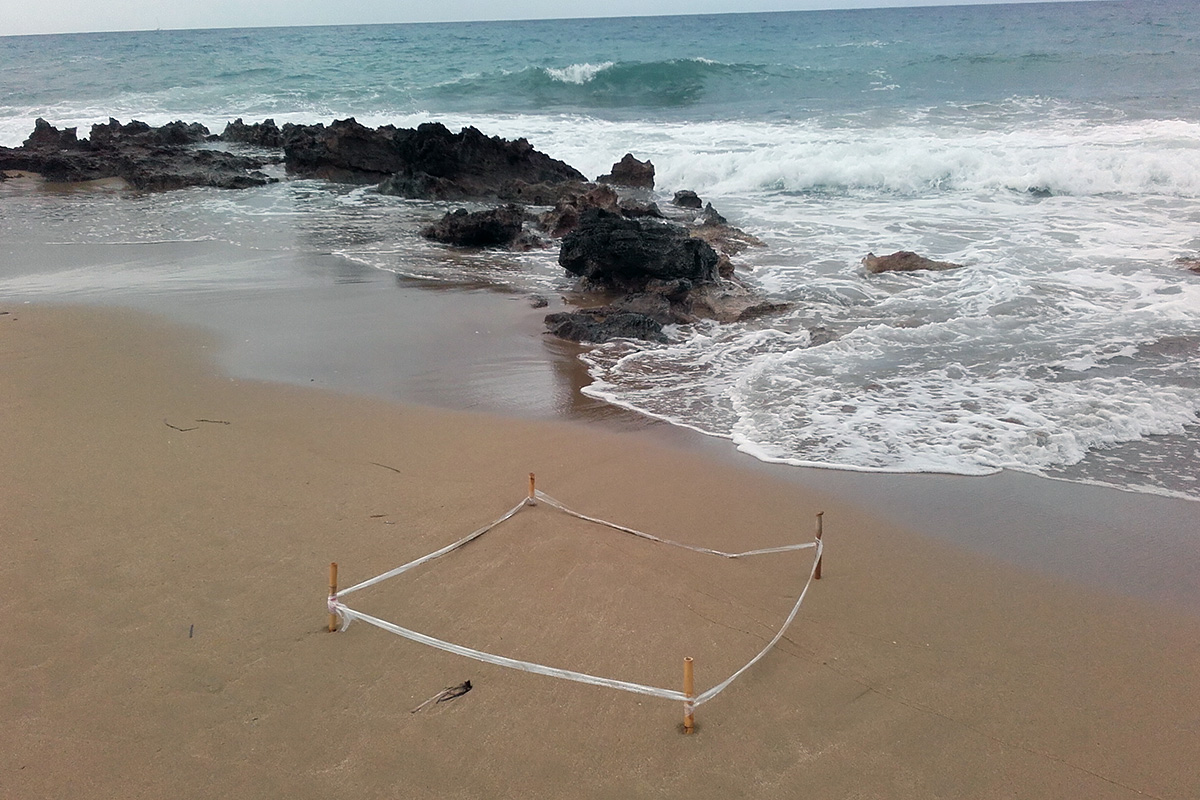
Due to large coastal development in many regions in which sea turtles’ nest light pollution has become a major concern. Not only does light deter any potential nesting females, but it may also disorientate hatchlings. The major cue hatchlings use to navigate towards the sea is the brightest light, which in a natural setting would be the moon reflecting on the ocean’s surface. Nowadays bright lights from hotels, bars, and private homes may cause hatchlings to crawl the wrong way, away from the sea.
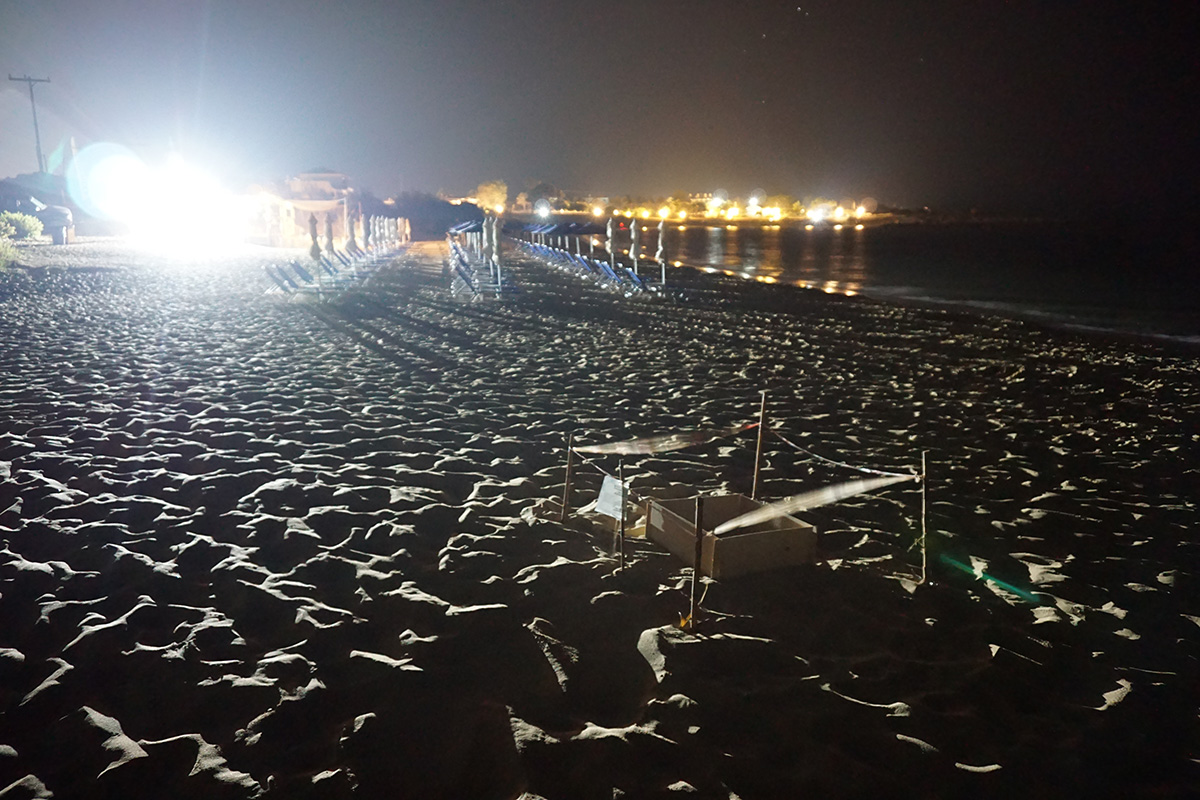
Volunteer at our Sea Turtle Conservation Programme
Join our international team of volunteers in Kefalonia Island
